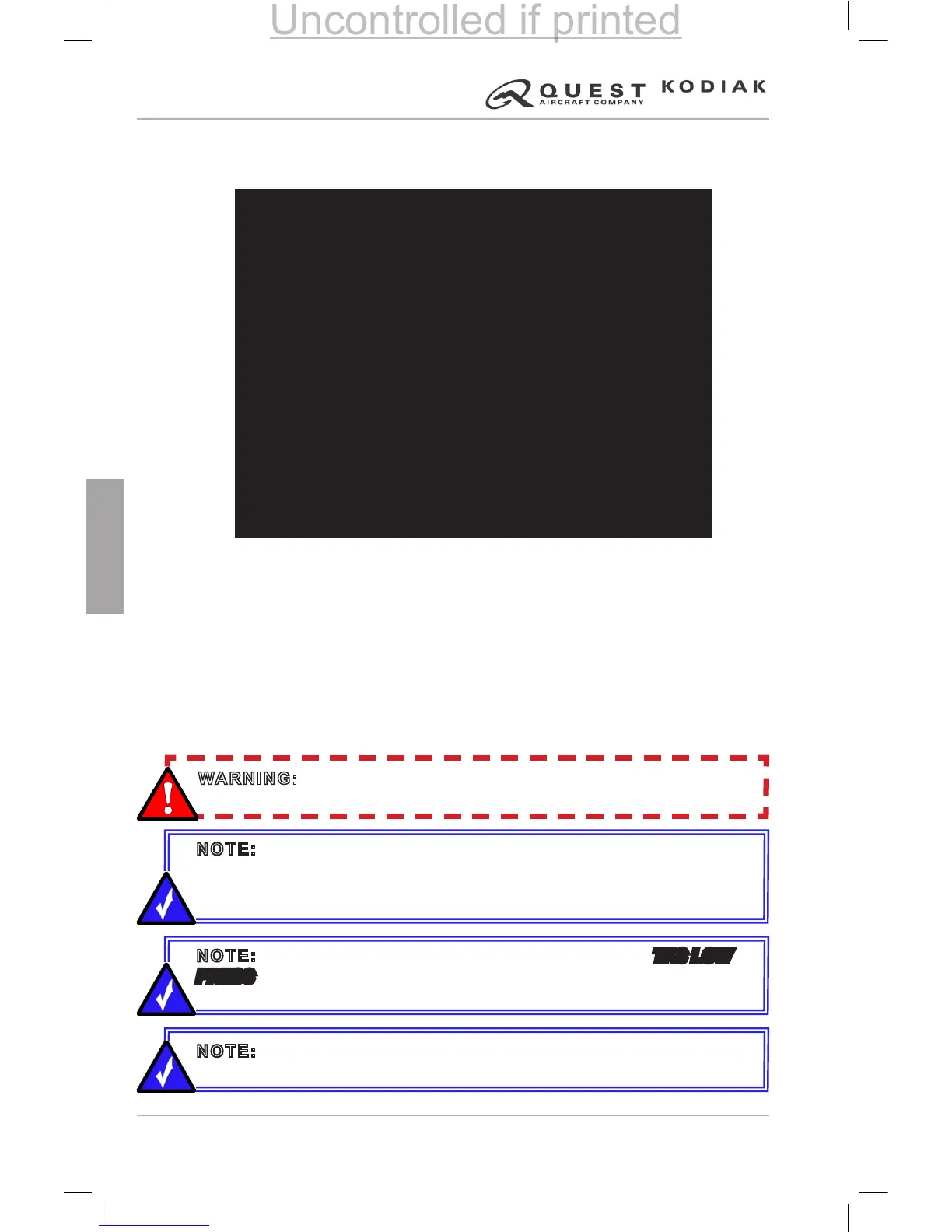6. Located on the instrument panel in plain view of the pilot (replaces non-
Flight Into Known Icing placard):
9.4-3 EMERGENCY PROCEDURES
A failure of the Ice Protection System is dened as any condition, observed
or suspected, in which the system fails to remove ice from protected surfaces
including the propeller, in addition to any Ice Protection System CAS failure
annunciations. An unobserved failure may be indicated by a decrease in
airspeed, anomalous handling characteristics, or airframe vibrations. It is
normal for small accumulations of ice to build and shed from the protected
areas of the aircraft.
NOTE: Signicant loss in cruise or climb performance may be an
indication of propeller ice accumulations that are not visible to the naked
eye. Operation of the engine at 2200 (maximum) RPM will help shed ice in
severe icing conditions.
WARNING: With ice accumulations on the horizontal stabilizer leading
edge, do not extend the aps. Perform a aps-up landing.
NOTE: During Ice Protection System operation, occasional TKS LOW
PRESS annunciations are normal during system mode changes, operation
at temperatures above freezing, or with warm ice protection uid.
NOTE: A continuous low pressure indication can be expected if the
system is operated in temperatures above +10°C
This aircraft is certied in the Normal Category. The
markings and placards installed in this airplane must be
complied with when operating this airplane. Additional
operating limitations which must also be complied with
when operating this airplane are contained in the FAA
Approved Flight Manual and Pilot’s Operating Handbook.
Aerobatic maneuvers, including spins are PROHIBITED.
This airplane is certied for the following ight
operations as of the date of issuance of the original
airworthiness certicate.
DAY - NIGHT - VFR - IFR
Flight into known ice is approved only if optional TKS anti-icing
equipment is installed and operating. See the TKS POH/AFM
Supplement for details.
100-910-0091

